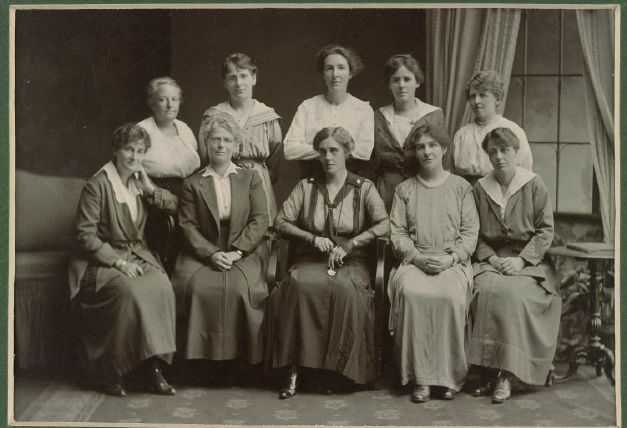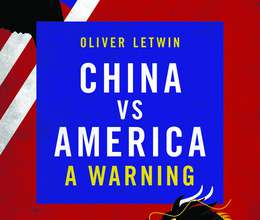by Ruth Russell
This speech was presented by Ruth Russell at WILPF’s conference celebrating the 5th anniversary of adoption of the United Nations Treaty on the Prohibition of Nuclear Weapons
I am happy to be invited to share with you our international project “Reaching Critical Will” to rid the world of nuclear weapons.’
First I will give you a brief background about WILPF.
In 1915, (the year that the British army, including Australian Anzacs, was invading Turkey) in the first World War), more than 1000 women from both warring and neutral nations, met in The Hague for an international Congress of Women. They set out resolutions for ending all wars and resolved to take them to heads of State in Europe and the USA.

Meanwhile, in Melbourne, two womens groups were also opposing war publicly. They sent three women, Eleanor Moore, Vida Goldstein and Cecilia John to attend the second womens international Congress in May 1919, which adopted a Constitution and the name – Womens International League for Peace & Freedom (WILPF). This means WILPF is the oldest women’s peace organisation in the world, as we formed 103 years ago!
WILPF’s mission is to end and prevent war, ensure that women are represented at all levels in the peace-building process, defend the human rights of women and promote social, economic and political justice.
WILPF soon formed strong branches in all States of Australia and became part of a worldwide network of WILPF women.
Our SA branch only formed after the death of the charismatic Leonora Polkinghorne in 1954. We played a very active part in opposing the Vietnam war, from 1962 until long afterwards, when several WILPF women supported the orphans and children with Australian fathers.
With the earlier dropping of nuclear bombs on Hiroshima and Nagasaki, the key peace issue facing the world was the potential that nuclear weapons held to annihilate whole cities and countries. Disarmament is the only sensible way forward.
It was hoped that this new United Nations international agency would be able to be solve differences between countries, negotiate peaceful settlements and stop the proliferation of nuclear weapons which were being acquired by more countries.
Despite these encouraging signs of brokering peace, what soon developed was an arms race. Australia saw advantages in selling weapons through promotion by government “Arms Fairs” and increasing their military capacity through the acquisition of military hardware”.[1]
Meanwhile, back in SA, WILPF SA’s branch cooperation with other peace groups had increased, especially with the United Nations Association, with a WILPF representative on their Executive. WILPF also worked with the UNAA Disarmament Committee, the Campaign for an Independent East Timor, the Peace Information Exchange, the Status of Women Committee, Time for Peace, Australian Anti-Bases Campaign Coalition, the Australian Peace Committee and various church groups.
WILPF was concerned about the proliferation and possible use of existing nuclear weapons. We felt something needed to be done to address this intolerable situation which kept some countries hostage to others which possessed nuclear weapons.
Nine states now possessed nuclear weapons – the United States, Russia, France, China, the United Kingdom, Pakistan, India, Israel and North Korea.
The United Nations (now based in New York) seemed unable to prevent the proliferation of nuclear weapons.
When a young Australian WILPF woman, Felicity Hill, (now known as Felicity Ruby) became Director of WILPF’s New York office, she was also able to find a willing donor to establish a great peace initiative in 1999.
Felicity named this new WILPF project “Reaching Critical Will” which aims to rid the world of nuclear weapons. She based it in our WILPF New York office, close to the United Nations Building made lobbying delegates is easier.

This became WILPF’s key disarmament program which works for disarmament and arms control of many different weapon systems.
It leads our organisations’ analysis and advocacy for disarmament, the reduction of military global spending and militarism, and the investigation of gendered aspects of the whole disarmament processes.
WILPF seeks to achieve disarmament, challenge militarism, and confront violent masculinities and gender discrimination through research, policy analysis, advocacy, monitoring and reporting.
Some background to nuclear disarmament from Felicity’s article in our international WILPF “Peace & Freedom” January/February 1999 edition – makes very scary reading …
I am reading from her article titled “Disarmament Update”, January 1999.
“There are 36,000 nuclear weapons in the world, many on hair-trigger alert, floating around on submarines or buried in silos. Russia has 22,500, the U.S. has 12,000 in the U.S. and about 150 in Europe; France has 450, China has about 400, the U.K. has 160 and Israel is believed to have about 100. These weapons represent the most perfect sadism humankind has concocted. Their complete abolition is the only answer.
The fact that India and Pakistan recently tested nuclear weapons should galvanise the international community into action and should force the five declared nuclear weapons powers to enact what they promised in 1968 in the Non-Proliferation Treaty: and should force the five declared nuclear weapons powers to enact what they promised in 1968 in the Non-Proliferation Treaty: an end to the nuclear arms race; nuclear disarmament, and a treaty on general and complete disarmament.
The fact that the five nuclear weapons States (the U.S, U.K, France, Russia and China) have held the Non-Proliferation Treaty in contempt for so long, indicating that they have no intention of disarming, is the reason India and Pakistan were tempted to join the club.
Condemning India and Pakistan for wanting to join the club is important, but WILPF has sought to bring the focus back onto the need for complete and total nuclear disarmament by noting that proliferation was inevitable while nuclear weapons continued to hold the prestige they do in the international community. Those who hold nuclear weapons up as the symbol of power need to be under as much pressure as India and Pakistan (and Israel for that matter) to use the Model Nuclear Weapons Convention written by NGO experts and submitted to the United Nations by Costa Rica.
In November, we saw the splitting of NATO members in the General Assembly on the issue of nuclear disarmament. Despite U.S. pressure on its friends and allies, 12 out of the 16 NATO countries did not vote against the New Agenda Coalition resolution calling on the nuclear weapon States and nuclear-capable States to take immediate steps toward the elimination of nuclear weapons.
This is a very good sign that our movements for the abolition of nuclear weapons and the negotiation of a Nuclear Weapons Convention are making a difference. NATO is undergoing a review of its nuclear policy, which will be discussed at its April meetings in Washington D.C. WILPF women all over the world lobbied their governments and have contributed to this success. Our campaign is leading in these activities, with the magnificent support of WILPF Sections in many countries. “
WILPF’s Reaching Critical Will office in New York, is close to the United Nations building where the UN General Assembly – First Committee on Disarmament and International Security have met since 2002.
WILPF provides reports (such as the one I have just read out), analysis, documentation and archives from this Disarmament Committee. They are all available on our WILPF Reaching Critical Will website.
The aim of this UN First Committee is to discuss and make recommendations on principles of cooperation for maintaining peace and security, including disarmament. It is empowered to make recommendations based on these principles to member states and the UN Security Council.
It is interesting to note that the very first resolution adopted by the UN General Assembly in 1946 (the year I was born and I am now 75) called for “the elimination from national armaments of atomic weapons and of all other major weapons adaptable to mass destruction”.
Every year, the General Assembly adopts 40-50 resolutions on disarmament and non-proliferation by a majority vote or by consensus.
It is interesting to hear the behind the scenes lack of support and obfustication to progress this important security treaty, which aims to prevent widespread death and destruction on an unimaginable scale ever happening again.
I will read from a WILPF article explaining how this Committee works, so you get an idea what an uphill battle to achieve this goal it was :
“While the UN First Committee offers many opportunities in principle, it often fails to make good use of the potential. There is a discord of perceptions between member states – the way one perceives elements of and challenges to its security, often differ widely from the way other states perceive their own situations, or the global situation.”
Thus, discussion in the UN First Committee is largely static – there is limited acknowledgement of other states perspectives, and a lack of flexibility in re-examining one’s own perspective. The rigidity of this process is mostly determined by the key countries. Delegates to the General Assembly are generally required to “toe their party line” and reflect the beliefs, values, and doctrines of their governments.
Miraculously, the Treaty on the Prohibition of Nuclear Weapons was negotiated at the United Nations in New York in March, June and July 2017, with the participation of more than 135 countries, the International Committee of the Red Cross and members of civil society (including ICAN and WILPF).
Then, on 7 July 2017, 122 states voted in favour of the Treaty’s adoption. It opened for signature on 20 September 2017 and after receiving 50 ratifications, the Treaty on the Prohibition of Nuclear Weapons entered into force on 22 January 2021.
This Treaty outlaws the development, testing, production, manufacturing, acquisition, possession, stockpiling, stationing, deployment, use, threat of use, transfer, or receipt of nuclear weapons. It prohibits the assistance, encouragement, or inducement of any outlawed activity.
The Treaty also includes provisions for victim assistance and environmental remediation. It is the first treaty to recognise the disproportionate impact of nuclear weapons on indigenous people and women.
Prior to the Treaty’s adoption, nuclear weapons were the only weapons of mass destruction not subjected to a comprehensive ban, despite their catastrophic, widespread and persistent humanitarian consequences. This new agreement fills a significant gap in international law.
The aim of the treaty is a comprehensive and categorical ban of nuclear weapons. It binds signatories not to develop, test, produce, acquire, have control of, use or threaten to use nuclear weapons.
States also cannot “assist, encourage or induce” anyone to engage in any activity prohibited under the treaty — essentially anything to do with nuclear weapons.
This Treaty also strengthens the current nuclear safeguards found in the 1970 Treaty on the Non-Proliferation of Nuclear Weapons by requiring all states that join to have comprehensive provisions in place and not allowing states to weaken their existing safeguards.
[1] P.18-19 “Piecing it Together – hearing the stories of AIDEX 91 – a report prepared by Friends of the Hearings 1991-1995.ISBN 0 646 24665 8






